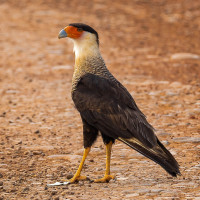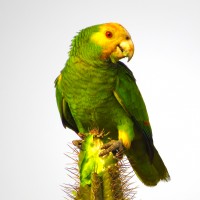Opis
The Kralendijk Sewage Ponds are part of the waste water treatment plant that is located just outside Kralendijk. The place does not look very attractive at first glance and has a kind of industrial look because of the buildings, pipes and basins. But around the buildings are shallow ponds that attract birds like a magnet. Part of the treated waste water is pumped into these ponds. This means that the ponds always have fresh water, which is a scarce resource for birds on Bonaire. That is why there are always birds to see around the sewage ponds and this is one of the best spots for birding on Bonaire, maybe even the best.
Not only water birds like waders and ducks can be observed, but also rare songbirds and vagrants. Among the birds that you are likely to see are American Flamingo, Greater Yellowlegs, Lesser Yellowlegs, Pied-billed Grebe, Black-bellied Whistling-Duck, Blue-winged Teal, White-cheeked Pintail, Black-necked Stilt, Purple Gallinule, Magnificent Frigatebird, Snowy Egret, Crested Caracara, Northern Scrub-Flycatcher and Yellow-shouldered Parrot.
Szczegóły
Dostęp
The Kralendijk Sewage Ponds are located just outside Kralendijk. Click on the P in the map for directions or coordinates. Park the car at the barrier and ask the guard if you can enter the grounds for bird watching. Most of the time you get access without any problem. There are no official trails, but you will automatically see the green vegetation around the ponds and the birds flying. However, some parts are not accessible. Always a good idea to ask the guard for advice on which parts are accessible and which are not.


